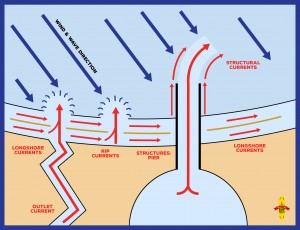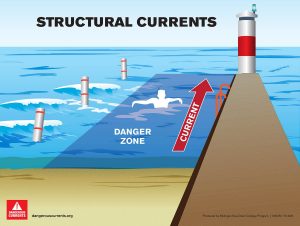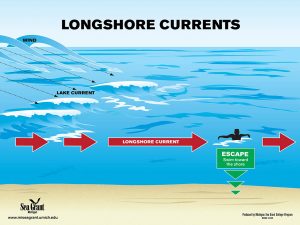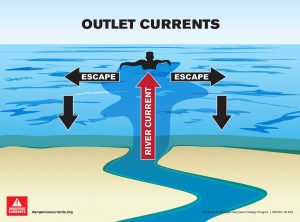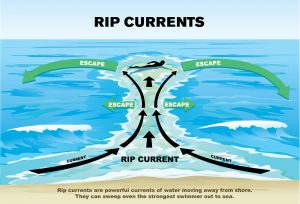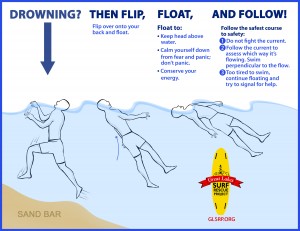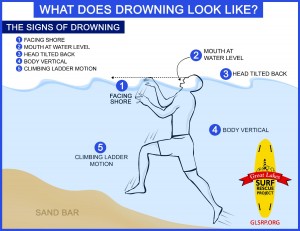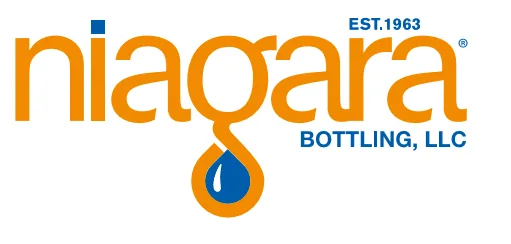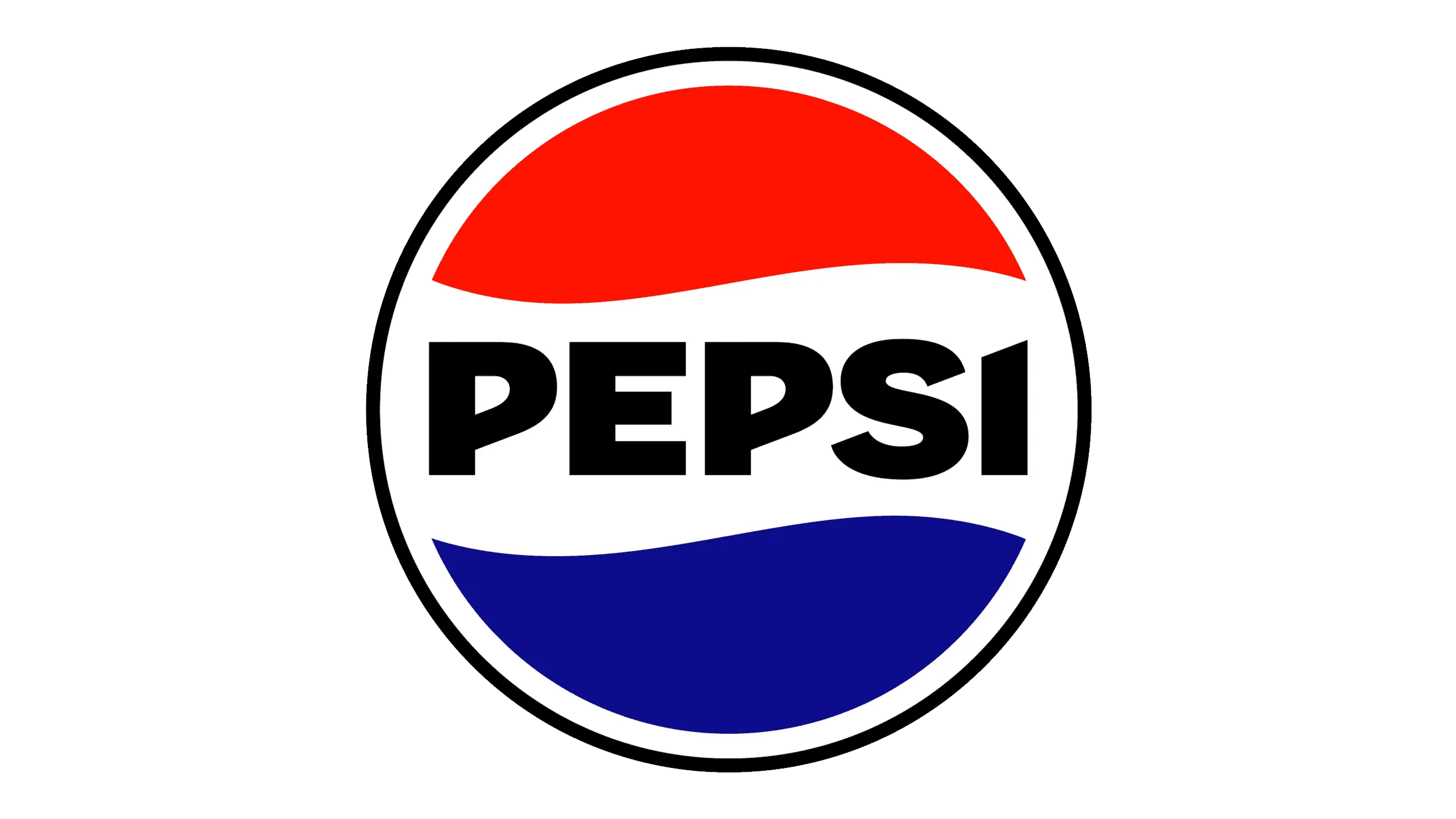TIPS ON STAYING SAFE WHILE ENJOYING OUR LAKEFRONT COMMUNITY
City of Kenosha Ordinance #6.02(b)(6): It is unlawful to enter or remain in the water within fifty (50) feet, measured in any direction, of a pier, jetty, breakwater, or seawall, or within one hundred fifty (150) feet of the mouth of the Pike River. Violators could be fined up to $1,000
DANGEROUS CURRENTS
Can exist on the Great Lakes (Rip Currents, Longshore Currents, Structural Currents, and Outlet Currents). And these Dangerous Currents happen in concert when there are Winds and Waves; i.e. Winds = Waves = Dangerous Currents. This illustration can show you how all of these Dangerous Currents can work in concert together.
Different Types of Currents
Click image to enlarge
“Flip, Float, Follow” Drowning Survival Strategy
If you are ever caught in water over your head or a Dangerous Current:
- FLIP: Flip over onto your back and float.
- FLOAT:
- Float to keep your head above water.
- Float to calm yourself down from the panic and fear of drowning.
- Float to conserve your energy.
- FOLLOW: Follow the safest path to safety.
- Do not fight the current.
- Follow the current to assess which way it’s flowing. Swim perpendicular to the flow.
- To tired to swim, continue floating and try to signal for help.
The Signs of Drowning
- Facing shore
- Mouth at water level
- Head tilted back, look of panic or eyes glassy or closed, and hyperventilating or gasping
- Vertical in water. Not using legs for forward swimming movement.
- Ladder climbing motion, hands rarely out of the water or may be lightly breaking the surface – Hair over forehead or eyes
